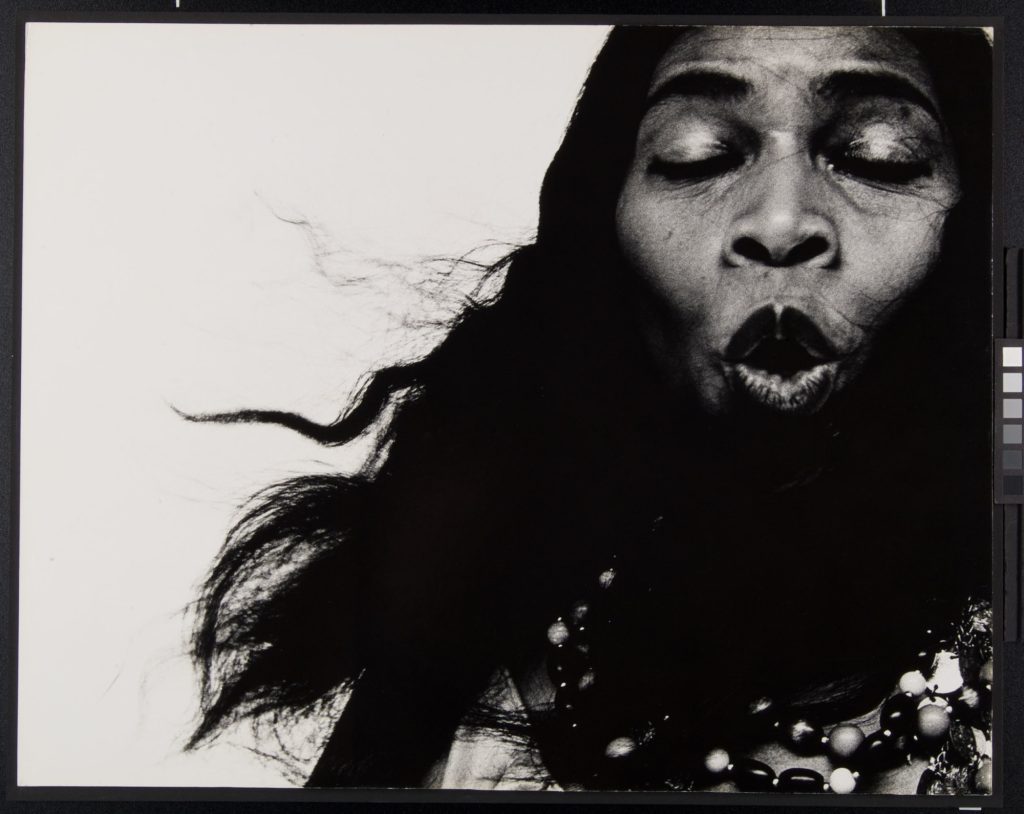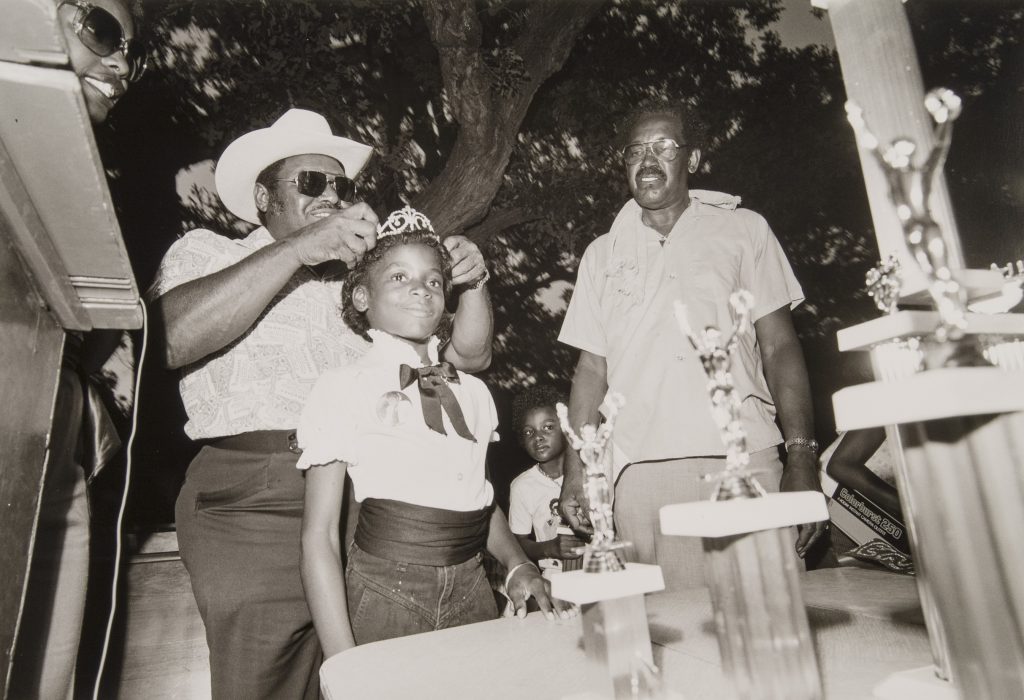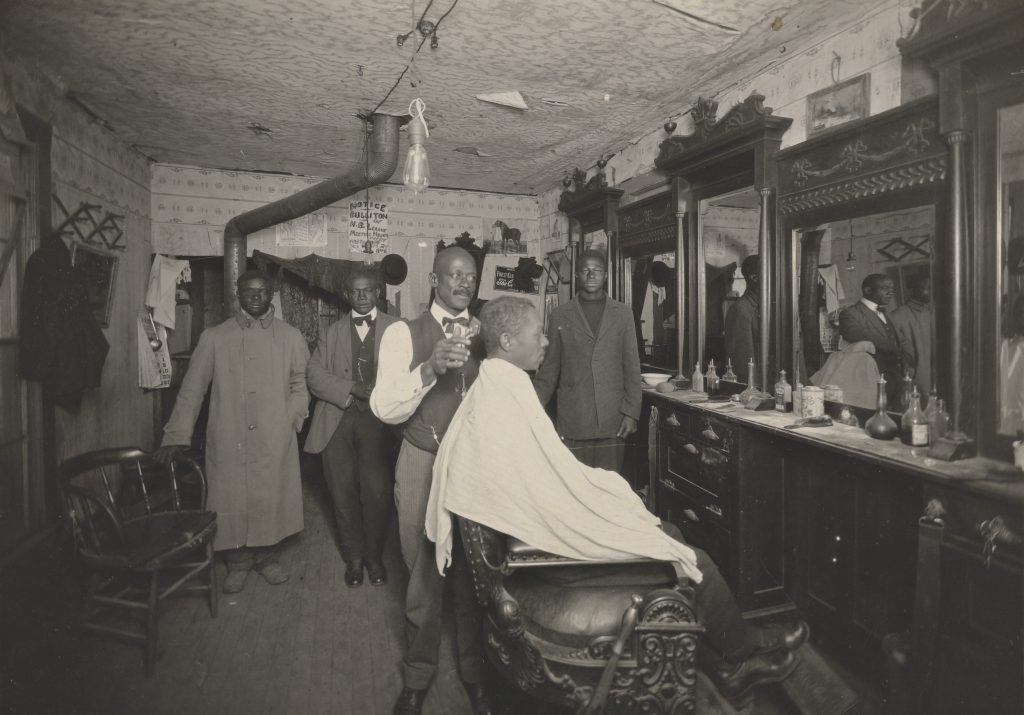Black American Life Through the Photographer’s Lens
The Amon Carter Museum of American Art (the Carter) presents a focused survey exploring over a century of photographic representations of Black American experiences, the first presentation of its kind at the Museum. Black Every Day: Photographs from the Carter Collection juxtaposes historical and contemporary photography with vernacular images to spotlight and celebrate more than 100 years of Black American life represented in the Carter’s photography collection. Over fifty artworks will be on view by iconic artists including Roy DeCarava, Dorothea Lange, Deana Lawson, Gordon Parks, James Van Der Zee, Garry Winogrand, and more—including twenty-three artworks on view for the first time since entering the Carter’s collection—accompanied by over 100 vernacular photographs. The exhibition will be on view at the Carter through September 11, 2022.

“Black Every Day leverages the Carter’s exemplary photography collection and expansive archive of vernacular imagery to illustrate the vibrant and diverse lives of Black Americans,” said Andrew J. Walker, Executive Director. “The exhibition intends to celebrate the many facets of Black culture in America while also serving as a dynamic window into people and communities who have not always been reflected in museum exhibitions. We are grateful to collector Peter J. Cohen, whose gift of over 200 vernacular photographs made this project possible.”

Richard Avedon (1923–2004)
Marian Anderson, 1955
Gelatin silver print
Amon Carter Museum of American Art, Fort Worth, Texas, Gift of Edward L. Mattil
P1990.25
By bringing together fine-art photography with vernacular images, the exhibition explores representations of Black life and culture through a range of perspectives. The exhibition opens with a daguerreotype by Sheldon K. Nichols, the oldest artwork featured, to confront the legacy of inequity and narrative tropes that have shaped Black representation in American visual culture. It then moves into five thematic sections that challenge these depictions by highlighting different aspects of Black everyday lives as captured by photographers:
- Community: Images in this section, including James Van Der Zee’s Street Parade, Robert Frank’s Funeral — St. Helena, South Carolina, and Roy DeCarava’s Dancers, NYC, capture celebration, gathering, and worship. Whether casual moments or key markers of life, these communal moments create safe harbors for Black Americans to share in collective identities and self-expression.
- Labor: This section features a range of Black labor, from the work of fighting for equality to engineering, steel working, and military professions. It showcases Black people working in a variety of circumstances, from uncompensated and forced labor—like that of enslaved or incarcerated workers—to trailblazing positions in various fields. Highlights include Dorothea Lange’s Ex-slave with a Long Memory, Alabama and Danny Lyon’s Student Nonviolent Coordinating Committee (SNCC) Sit-In, Atlanta.
- Family: This section explores the family unit as a vital space in Black communities, especially important given the fractures imposed by historic injustices like the transatlantic slave trade. The works of art convey both the vulnerability of these families and their resilience, allowing private moments to be captured. Especially rich in work by Black photographers, this section includes Earlie Hudnall Jr.’s Wheels, Deana Lawson’s Barbara and Mother, and Gordon Parks’s Red Jackson with His Mother and Brother, Harlem, New York.
- Excellence: Serving as a counter-narrative to the depictions of Black Americans that have often been associated with negative stereotypes, this section celebrates individuals who have excelled in their fields, are important figures within the community, and have contributed to history and culture. In addition to photographs such as Roy DeCarava’s Coltrane and Elvin, New York, and Richard Avedon’s Marian Anderson, this section offers an opportunity to learn about lesser-known figures who impacted their communities. These works are a reminder of the continuing contributions of Black people to all aspects of American culture.
- Vernacular: These recently acquired images allow the Carter to continue the conversations between vernacular and fine-art photography already established in the Museum’s collection. Together they reflect and celebrate everyday moments, from causal family gatherings to larger ceremonies such as weddings, providing a compelling, albeit incomplete, portrait of Black American life over the last century as documented by the community.

Peter H. Feresten (1945–2007), Miss Juneteenth, Sycamore Park, Fort Worth, 1984, gelatin silver print, Amon Carter Museum of American Art, Fort Worth, Texas, Gift of the Texas Historical Foundation with support from a major grant from the DuPont Company and Conoco, its energy subsidiary, and assistance from the Texas Commission on the Arts and the National Endowment for the Arts, P1985.17.70, © 1984 Peter Helms Feresten
“In the broader culture, Black subjects are so often only addressed in the contexts of history, such as the Civil Rights movements, or discussions of discrimination, police violence, and racism,” said Kristen Gaylord, Associate Curator of Photographs. “While these topics are of the utmost importance, they also relegate images of Blackness to traumatic and difficult moments, reducing the complexity of people and their experiences to a single narrative. In this exhibition, Lauren Cross and I aimed to do the opposite, showing Black Americans celebrating, playing, working, gathering, worshipping, and many other everyday moments that our visitors will recognize and identify with.”
“The exhibition does not intend to represent the full realities of Black people but is a lens to view these specific lives that are represented through the Carter’s collection against the wider contexts of Black culture,” said Lauren Cross, an artist, curator, and Assistant Professor of Interdisciplinary Art and Design Studies at the University of North Texas. “Of all the works I viewed when organizing the show, it was Sheldon K. Nichols’s daguerreotype that stopped me in my tracks and helped me realize how the visible, everyday experiences of being Black are truly framed by history. To help readjust this framing, Kristen and I also wanted to expand the viewer’s experience outside the photographs on view into the design of the gallery. The deep yet colorful walls celebrate the warmth and wisdom of Black culture. We want visitors to feel at home yet also provide a space for reflection and respect for Black lives.”

Unknown; [Interior view of barber shop]; ca. 1920; Gelatin silver print; Amon Carter Museum of American Art, Fort Worth, Texas; P1976.19.86
Black Every Day: Photographs from the Carter Collection is organized by the Amon Carter Museum of American Art. The exhibition is co-curated by the Museum’s Associate Curator of Photographs, Kristen Gaylord, and Fort Worth-based artist, curator, and Assistant Professor of Interdisciplinary Art and Design Studies at the University of North Texas, Lauren Cross. The Carter will celebrate the exhibition on Thursday, August 11, during Second Thursdays at the Carter: Representation & Reality. Visit cartermuseum.org for additional information.


 Sign in
Sign in

